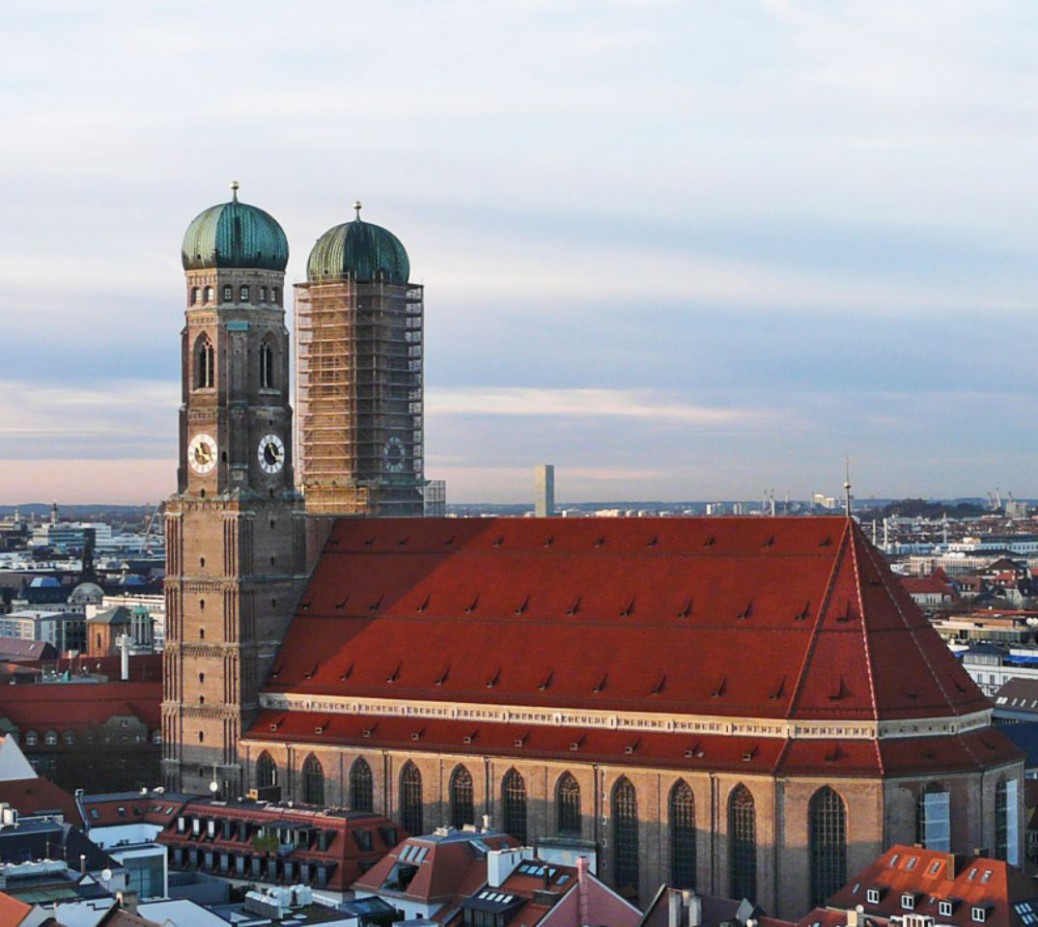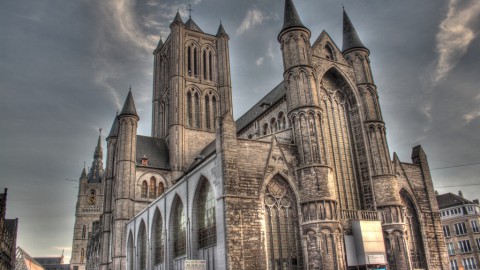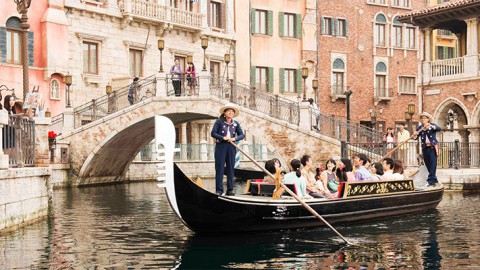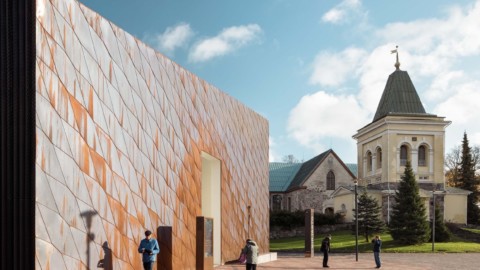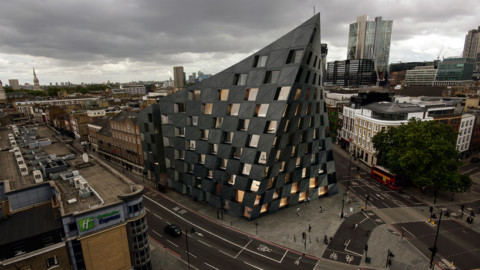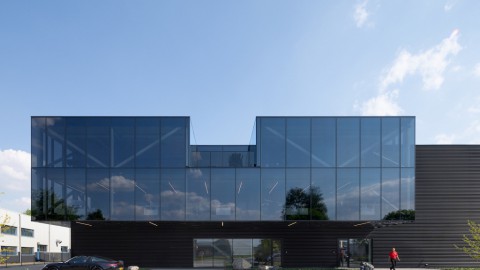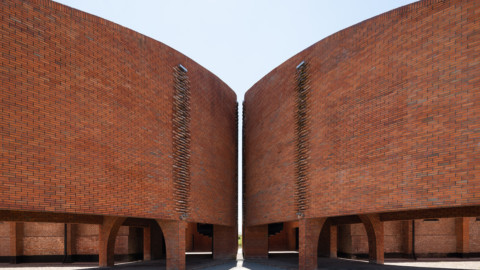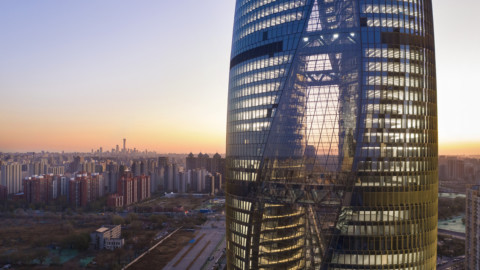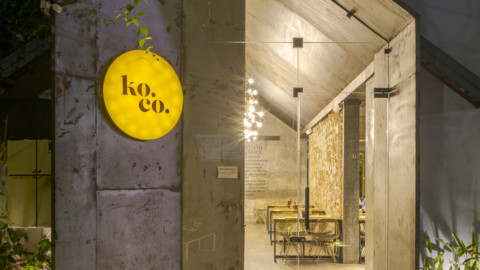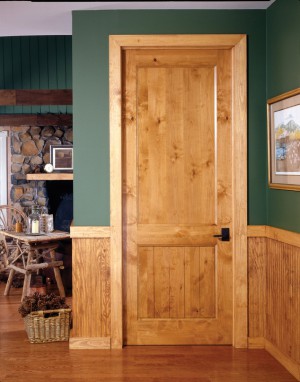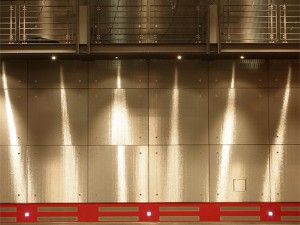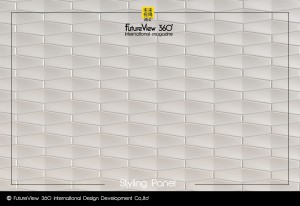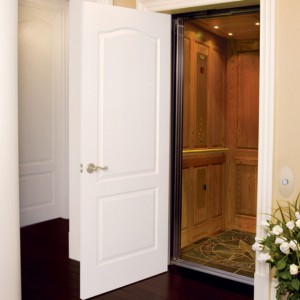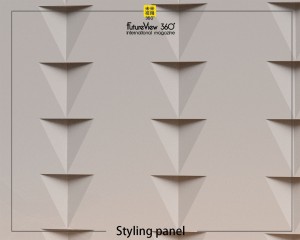Munich Frauenkirche 慕尼黑聖母教堂
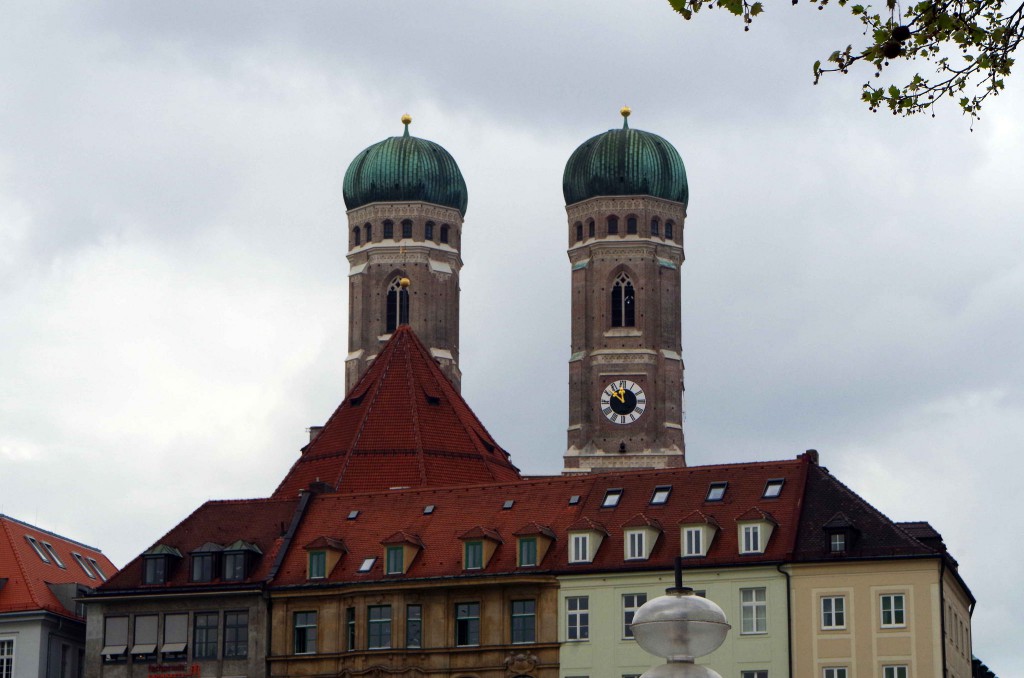
The Frauenkirche (Full name: German: Dom zu Unserer Lieben Frau, English: Cathedral of Our Dear Lady) is a church in the Bavarian city of Munich that serves as the cathedral of the Archdiocese of Munich and Freising and seat of its Archbishop. It is a landmark and is considered a symbol of the Bavarian capital city. Although called “Münchner Dom” (Munich Cathedral) on its website and URL, the church is always referred to as “Frauenkirche” by locals.
The church towers are widely visible because of local height limits. According to the narrow outcome of a local plebiscite, city administration prohibits buildings with a height exceeding 99 m in the city center. Since November 2004, this prohibition has been provisionally extended outward and as a result, no buildings may be built in the city over the aforementioned height. The south tower which is normally open to those wishing to climb the stairs, will, on completion of its current renovation, offer a unique view of Munich and the nearby Alps.
Frauenkirche(全名:德語:Dom zu Unserer Lieben Frau,英語:我們親愛的女士的大教堂)是巴伐利亞慕尼黑市的一座教堂,是慕尼黑大主教管區和弗賴辛大教堂及其大主教的所在地。這是一個里程碑,被認為是巴伐利亞首都的象徵。雖然在其網站和URL上稱為“MünchnerDom”(慕尼黑大教堂),但教堂總是被當地人稱為“Frauenkirche”。
由於當地的高度限制,教堂塔樓廣泛可見。根據當地公民投票的狹隘結果,市政府禁止在市中心建造高度超過99米的建築物。自2004年11月以來,該禁令暫時向外延伸,因此,在上述高度範圍內,城市不得建造任何建築物。南塔通常向希望爬樓梯的人開放,在完成現有裝修後,將提供慕尼黑和附近阿爾卑斯山的獨特景觀。
Location:Frauenplatz 12
Munich, Bavaria
Country:Germany
Denomination:Roman Catholic
History
Status:Co-cathedral
Consecrated:1494
Architecture
Functional status: Active
Architect(s):Jörg von Halsbach
Architectural type:Cathedral
Style:Gothic
Renaissance (domes)
Years built:preced. 12th century
actual 1468-1488
Completed:1524 (domes added)
Specifications
Length:109 metres (358 ft)
Width:40 metres (130 ft)
Number of domes:2
Number of towers:2
Tower height:99 metres (325 ft)
Administration
Archdiocese :Munich and Freising
Clergy
Archbishop:Reinhard Cardinal Marx
Priest(s) Hans-Georg Platschek
Laity
Director of music:Lucia Hilz
(kapellmeister)
Organist(s):Hans Leitner
地點:Frauenplatz 12
慕尼黑,巴伐利亞
國家:德國
宗派:羅馬天主教徒
歷史
狀態:聯合教堂
奉獻:1494
建築
功能狀態:有效
建築師:JörgvonHalsbach
建築類型:大教堂
風格:哥特式
文藝復興(圓頂)
建成年份:已經建成。 12世紀
實際1468-1488
已完成:1524(添加了圓頂)
產品規格
長度:109米(358英尺)
寬度:40米(130英尺)
圓頂數量:2
塔數:2
塔高:99米(325英尺)
管理
大主教管區:慕尼黑和弗賴辛
牧師
大主教:萊因哈德紅衣主教馬克思
牧師Hans-Georg Platschek
俗人
音樂總監:Lucia Hilz
(樂長)
風琴師:Hans Leitner
History
Right next to the town’s first ring of walls, a Romanesque church was added in the 12th century, replacing a former, late romanesque building and serving as a second city parish following Alter Peter church (its tower nicknamed ‘Old Pete’), which is the oldest. The current late Gothic construction replaced this older church and was commissioned by Duke Sigismund and the people of Munich in the 15th century.
The cathedral was erected in only 20 years’ time by Jörg von Halsbach. For financial reasons and due to the lack of a nearby stone pit, brick was chosen as building material. Construction began in 1468. Since the cash resources were exhausted in 1479, Pope Sixtus IV granted an indulgence.
The two towers (north tower 98.57 m, south tower 0.12 m less) were completed in 1488 and the church was consecrated in 1494. However, due to lack of funds, the planned, tall, open-work spires typical of the Gothic style could not be built and the towers had to stay unfinished until 1525. Hartmann Schedel printed a view of Munich including the uncovered towers in his famous Nuremberg Chronicle, also known as Schedel’s World Chronicle. However, because rainwater was regularly penetrating the temporary roofing in the tower’s ceilings, a decision was made to complete them in a budget-priced design. This is how the building got its famous domes atop each tower and the church became such a non-interchangeable landmark. Their design was modelled on the Dome of the Rock in Jerusalem, which in turn took a lead from late Byzantine architecture and was at that time falsely considered to be Solomon’s original temple.
The building has a volume of about 200,000 m³. It is said to have had the capacity to house 20,000 standing people. (Church benches for ordinary people were a later introduction.) This is quite remakable for a town that, besides having had another (first) parish church, counted only 13,000 inhabitants at the end of the 15th century and for a church that was erected to serve but a modest (and second) city parish, merely repacing an earlier, yet significantly smaller construction.
The cathedral suffered severe damage during World War II due to the Allied forces’ aerial raids during the latter stages of the war — the roof collapsed, one of the towers suffered severe damage and a lion’s share of the immensely precious interior from all centuries since the foundation of the parish was lost either due to bomb raids or in their aftermath, when tons of debris had to be removed.
Major restoration efforts began after the war and were carried out in several stages, the last of which came to an end in 1994.
歷史
在城鎮的第一個城牆旁邊,一座羅馬式教堂於12世紀增建,取代了一座前羅馬式建築,並作為Alter Peter教堂(其綽號為“老皮特”)的第二座城市教堂,最老的。目前已故的哥特式建築取代了這座古老的教堂,並在15世紀由公爵西吉斯蒙德和慕尼黑人民委託。
大教堂由JörgvonHalsbach在20年後建成。由於經濟原因以及由於缺乏附近的石坑,選擇磚作為建築材料。施工於1468年開始。由於現金資源在1479年耗盡,教皇西施瓦斯四世給予了放縱。
兩座塔樓(北塔98.57米,南塔0.12米)於1488年完工,教堂於1494年建成。然而,由於缺乏資金,典型的哥特風格的計劃高大的開放式尖塔可以沒有建成,塔樓必須保持未完工,直到1525年。哈特曼Schedel打印了慕尼黑的景色,包括他著名的紐倫堡紀事報,也被稱為Schedel的世界紀事。然而,由於雨水經常穿透塔樓天花板的臨時屋頂,因此決定以預算價格設計完成雨水。這就是建築物如何在每座塔頂上都有著名的圓頂,教堂成為一個不可互換的地標。他們的設計模仿耶路撒冷的圓頂清真寺,後者又從拜占庭時期的建築中領先,當時被錯誤地認為是所羅門的原始寺廟。
該建築的容積約為200,000立方米。據說它有能力容納2萬名常住人。 (普通人的教堂長凳是後來的介紹。)這個城鎮除了擁有另一個(第一個)教區教堂外,在15世紀末只有13,000名居民,以及一座豎立的教堂,這是一個非常可以改造的城市。服務但是一個適度的(和第二個)城市教區,僅僅是在一個較早但卻顯著較小的建築中。
第二次世界大戰期間,由於盟軍在戰爭後期進行空中襲擊,大教堂遭受了嚴重破壞 – 屋頂倒塌,其中一座塔遭受了嚴重破壞,並且自從幾個世紀以來,其中一大部分是珍貴的內部區域。教區的基礎由於炸彈襲擊或其後果遺失,當時必須清除大量碎片。
戰後開始進行重大恢復工作,並分幾個階段進行,最後一個階段於1994年結束。
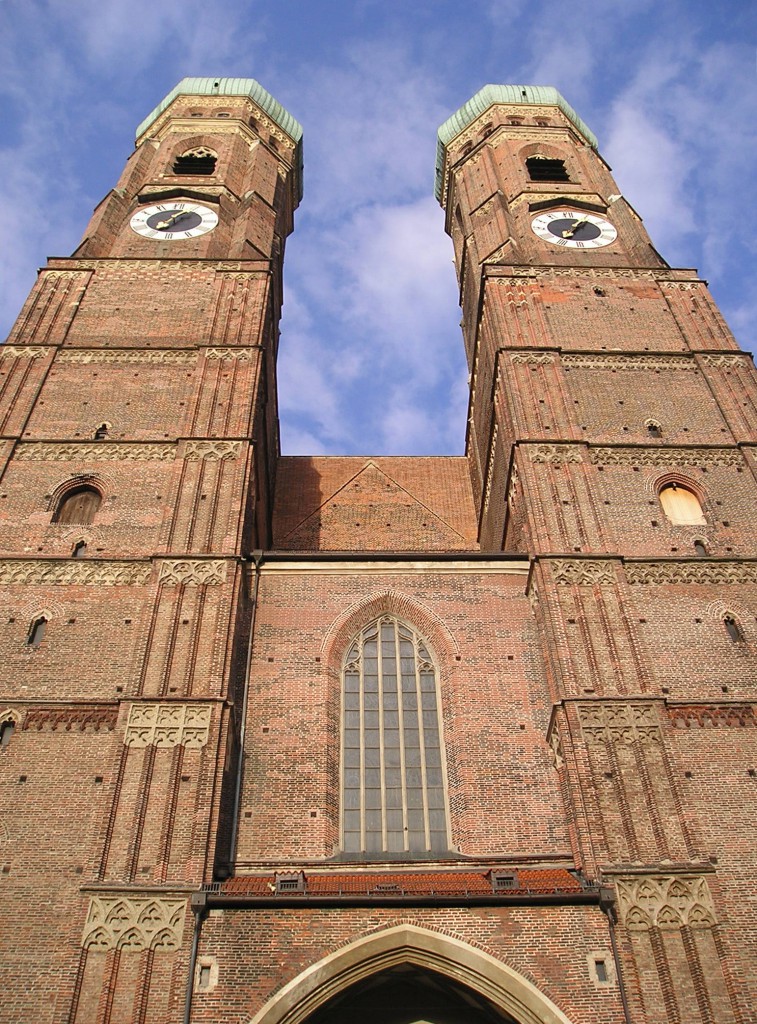
Architecture
The Frauenkirche was constructed from red brick in the late Gothic style within only 20 years. The building is designed very plainly, without rich Gothic ornaments and its buttresses moved into and hidden in the interior. This, together with the two tower’s special design (battered upwards, etc.), lets the construction, mighty anyway, look even more enormous and gives it a near-modern appearance according to the principle of “less is more”.
The Late Gothic brick building with chapels surrounding the apse is 109 metres (358 ft) long, 40 metres (130 ft) wide, and 37 metres (121 ft) high. Contrary to a widespread legend that says the two towers with their characteristic domes are exactly one meter different in height, they are almost equal: the north tower is 98.57 metres (323.4 ft) while the south tower is only 98.45 metres (323.0 ft), 12 centimetres (4.7 in) less. The original design called for pointed spires to top the towers, much like Cologne Cathedral, but those were never built because of lack of money. Instead, the two domes were constructed during the Renaissance and do not match the architectural style of the building, however they have become a distinctive landmark of Munich. With an enclosed space of about 200,000 m³, with 150,000 m³ up to the height of the vault, it is the second among the largest hall churches in general and the second among the largest brick churches north of the Alps (after St. Mary’s Church in Gdańsk).
建築
Frauenkirche是用哥特式晚期的紅磚建造的,僅用了20年。該建築設計得非常樸素,沒有豐富的哥特式裝飾,其支撐物移入並隱藏在內部。這一點,再加上兩座塔樓的特殊設計(向上擊打等),無論如何都讓建築看起來更加巨大,並根據“少即是多”的原則賦予它近乎現代的外觀。
晚期哥特式磚建築圍繞著後殿,長109米(358英尺),寬40米(130英尺),高37米(121英尺)。與一個普遍的傳說相反,兩座塔樓的特色圓頂高度恰好相差一米,它們幾乎相同:北塔為98.57米(323.4英尺),而南塔僅為98.45米(323.0英尺), 12厘米(4.7英寸)以內。最初的設計要求尖頂尖塔在塔頂上,就像科隆大教堂一樣,但由於缺錢,這些從未建成。相反,這兩個圓頂是在文藝復興時期建造的,與建築的建築風格不符,但它們已成為慕尼黑的獨特地標。它的封閉空間約為200,000m³,高達15萬立方米,高達拱頂高度,是全球最大的大廳教堂中的第二個,也是阿爾卑斯山以北最大的磚教堂中的第二個(在聖瑪麗教堂之後)格但斯克)。
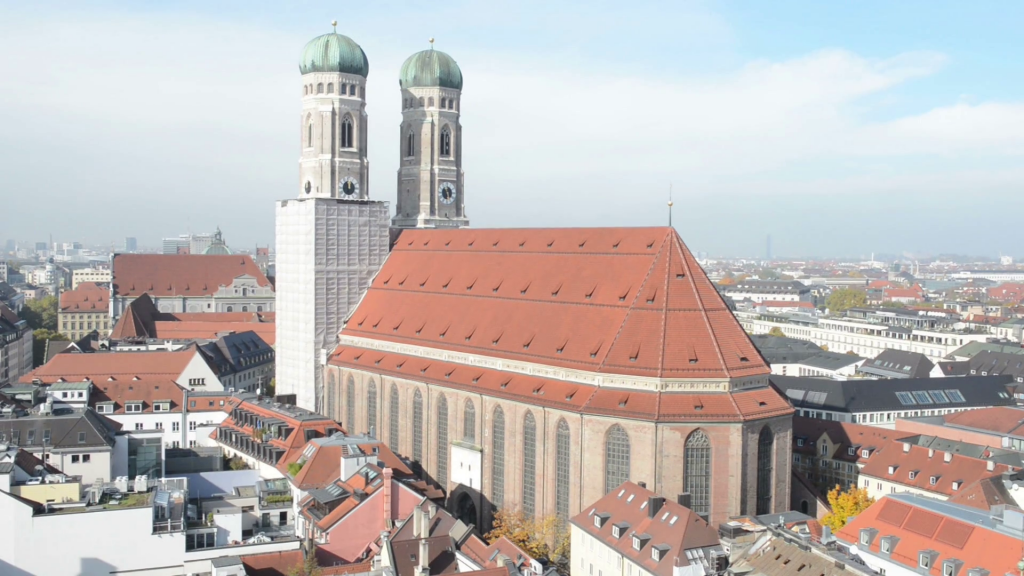
Interior
Catholic Mass is held regularly in the cathedral, which still serves as a parish church.
It is among the largest hall churches in southern Germany. The interior does not overwhelm despite its size. The hall is divided into 3 sectors (the main nave and two side aisles of equal height (31 metres (102 ft)) by a double-row of 22 pillars (11 at either side, 22 metres (72 ft)) that help enclose the space. These are voluminous, but appear quite slim due to their impressive height and the building’s height-to-width ratio. The arches were designed by Heinrich von Straubing.
From the main portal the view seems to be only the rows of columns with no windows and translucent “walls” between the vaults through which the light seems to shine. The spatial effect of the church is connected with a legend about a footprint in a square tile at the entrance to the nave, the so-called “devil’s footstep”.
A rich collection of 14th to 18th century artwork of notable artists like Peter Candid, Erasmus Grasser, Jan Polack, Hans Leinberger, Hans Krumpper and Ignaz Günther decorates the interior of the cathedral again since the last restoration. The Gothic nave, several of the Gothic stained-glass windows, some of them made for the previous church, and the tomb monument of Louis IV, Holy Roman Emperor are major attractions. For the daily choral prayers Erasmus Grasser created in 1495-1502 the choir stalls with busts of apostles and prophets and small statues which survived the alterations of the Baroque period and the Gothic Revival, but burned in World War II, only the figures had been relocated and preserved. Therefore, the Frauenkirche has still the largest surviving ensemble of characters of late Gothic in Germany. The optical end of the sanctuary forms on a column the St.Mary statue of Roman Anton Boos, which he carried out in 1780 for the abat-voix of the former pulpit. The former high altar painting completed by Peter Candid in 1620 has been moved to the north wall entrance of the sacristy and depicts the Assumption of Mary into heaven .
內部
天主教彌撒定期在大教堂舉行,大教堂仍然是教區教堂。
它是德國南部最大的大廳教堂之一。儘管尺寸很大,但內飾並沒有壓倒。大廳分為3個扇區(主要中殿和兩個相等高度(31米(102英尺))的通道,由22排雙排(兩側各11個,22米(72英尺))組成,有助於封閉這些空間寬敞,但由於其令人印象深刻的高度和建築物的高寬比而顯得相當纖細。拱門由Heinrich von Straubing設計。
從主門戶看來,視圖似乎只是在沒有窗戶的行列和在拱頂之間的半透明“牆”,光線似乎通過它們發光。教堂的空間效果與關於中殿入口處方形瓷磚足蹟的傳說有關,即所謂的“魔鬼的腳步”。
豐富的14至18世紀藝術家,如Peter Candid,Erasmus Grasser,Jan Polack,Hans Leinberger,Hans Krumpper和IgnazGünther等著名藝術家,自上次修復以來,再次裝飾了大教堂的內部。哥特式教堂中殿,幾個哥特式彩色玻璃窗,其中一些是為前教堂製作的,以及路易四世,神聖羅馬帝國皇帝的墓碑是主要景點。對於每日合唱禱告,伊拉斯謨格拉瑟在1495年至1502年創建了合唱團的攤位,其中包括使徒和先知的半身像以及在巴洛克時期和哥特復興的改建中倖存下來的小雕像,但在第二次世界大戰中被燒毀,只有數字被重新安置並保存。因此,聖母教堂仍然是德國最古老的哥特式晚期人物。聖殿的光學末端在羅馬安東布斯的聖瑪利亞雕像的柱子上形成,他在1780年為前講壇的abat-voix進行了。 1620年,彼得·坎迪德(Peter Candid)完成的前高壇畫作已被移至聖器收藏室的北牆入口處,並描繪了瑪麗的聖母升天節。
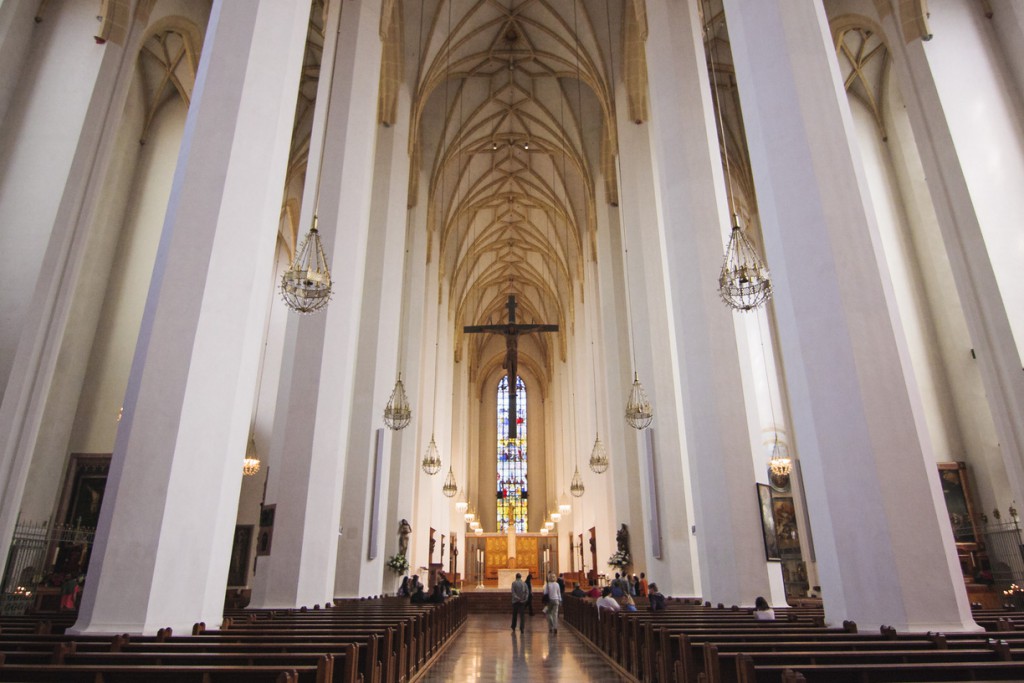
Teufelstritt, or Devil’s Footstep & perpetual wind
Much of the interior was destroyed during WWII. An attraction that survived is the Teufelstritt, or Devil’s Footstep, at the entrance. This is a black mark resembling a footprint, which according to legend was where the devil stood when he curiously regarded and ridiculed the ‘windowless’ church that Halsbach had built. (In baroque times the high altar would obscure the one window at the very end of the church visitors can spot now when standing in the entrance hall.)
In another version of the legend, the devil made a deal with the builder to finance construction of the church on the condition that it contain no windows. The clever builder, however, tricked the devil by positioning columns so that the windows were not visible from the spot where the devil stood in the foyer. When the devil discovered that he had been tricked, he could not enter the already consecrated church. The devil could only stand in the foyer and stomp his foot furiously, which left the dark footprint that remains visible in the church’s entrance today.
Legend also says the devil then rushed outside and manifested its evil spirit in the wind that furiously rages around the church.
Another version of that part of the legend has it that the devil came riding on the wind to see the church under construction. Having completely lost his temper, he stormed away, forgetting the wind, which will continue to blow around the church until the day the devil comes back to reclaim it.
Teufelstritt,或魔鬼的腳步和永恆的風
在第二次世界大戰期間,大部分內部被毀。倖存下來的景點是入口處的Teufelstritt或Devil’s Footstep。這是一個類似於足蹟的黑色標記,根據傳說,當他好奇地看待並嘲笑Halsbach建造的“沒有窗戶”的教堂時,魔鬼站在那裡。 (在巴洛克時期,高高的祭壇會掩蓋教堂盡頭的一扇窗戶,遊客現在站在入口大廳時可以看到它。)
在傳說的另一個版本中,魔鬼與建築師達成協議,以便在沒有窗戶的情況下為教堂的建築提供資金。然而,聰明的建造者通過定位柱子欺騙魔鬼,以便從魔鬼站在門廳的地方看不到窗戶。當魔鬼發現他被欺騙時,他無法進入已經獻身的教堂。魔鬼只能站在門廳裡,狠狠踩腳,這留下了今天在教堂入口處仍然可見的黑暗足跡。
傳說還說惡魔然後衝到外面,在風中瘋狂地肆虐教堂的邪靈表現出來。
傳說中那部分的另一個版本是魔鬼騎在風中看到正在建造的教堂。在完全發脾氣的情況下,他衝了出去,忘記了風,這將繼續在教堂周圍吹來,直到魔鬼回來重新奪回它。
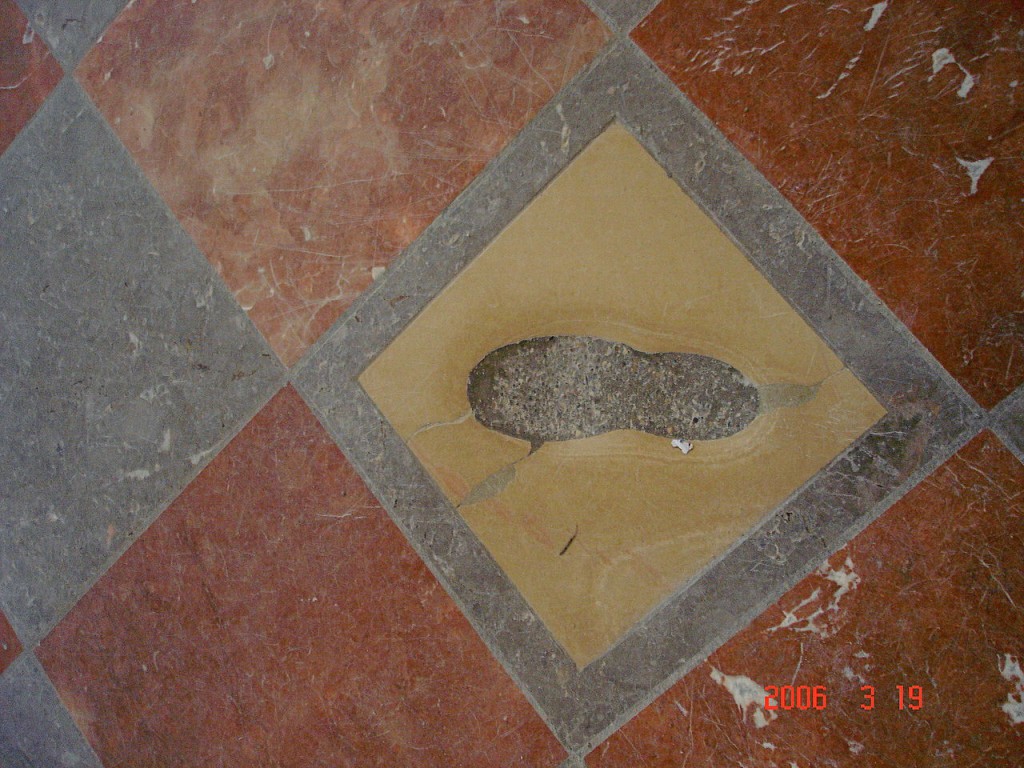
Organs
The current organs were built in 1993-1994 by Georg Jann. The Great Organ (1994) on the west gallery has 95 stops (140 ranks, 7,165 pipes), which can be played from two four-manual general consoles (a tracker console behind the Rückpositiv division, and a second movable electric console on the lower choir gallery). The Choir Organ (1993) is located on a gallery in the right nave, near the Altar stairs. It has 36 stops (53 ranks) and can be played from a three-manual tracker console, as well as from the two main consoles on the west gallery. Both organs together contain 131 stops (193 ranks, 9,833 pipes) and are the largest organ ensemble in Munich. The organs are being played frequently during the daily liturgical services and can also be heard during the annual concert series at the Cathedral between early July and mid-September.
機關
目前的機構由Georg Jann於1993年至1994年建造。 西部畫廊的Great Organ(1994)有95個站點(140個排名,7,165個管道),可以從兩個四個手動通用控制台(Rückpositiv部門後面的跟踪控制台,以及下部的第二個可移動電動控制台)播放 合唱團畫廊)。 合唱團(1993)位於右中殿的一個畫廊,靠近祭壇樓梯。 它有36個站點(53個等級),可以從三個手動跟踪控制台,以及西畫廊的兩個主要控制台播放。 兩個器官共有131個站點(193個排名,9,833個管道),是慕尼黑最大的器官合奏。 在每日禮拜儀式期間,這些器官經常被播放,也可以在7月初至9月中旬在大教堂舉行的年度音樂會系列中聽到。
Bells
Both towers contain ten bells cast in the 14th, 15th, 17th and 21st century. Their combination is unique and incomparable in Europe. The heaviest bell called Susanna or Salveglocke is one of the biggest bells of Bavaria. It was cast 1490 by Hans Ernst by order of Albrecht IV..
鐘聲
兩座塔樓都包含十四,十五,十七和二十一世紀的十個鐘聲。 它們的組合在歐洲是獨一無二的,無與倫比。 最響鈴的叫Susanna或Salveglocke是巴伐利亞州最大的鐘聲之一。 它由漢斯·恩斯特(Hans Ernst)按照阿爾布雷希特四世的命令鑄造了1490年。
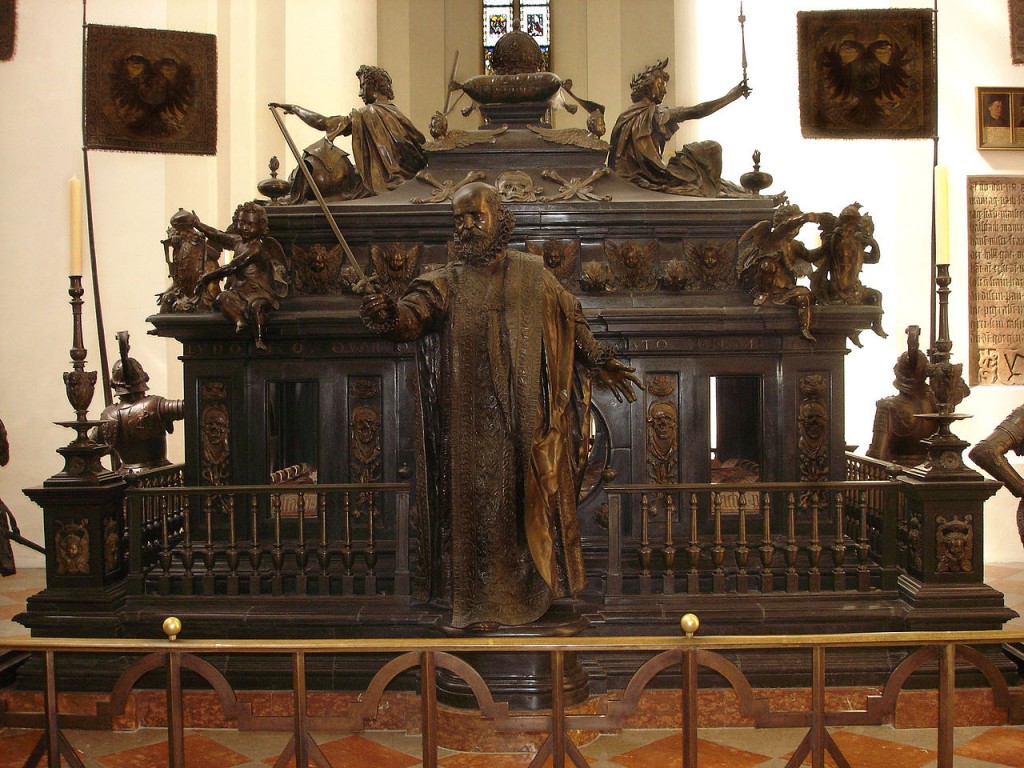
FROM:https://en.wikipedia.org/wiki/Munich_Frauenkirche
Don’t you think it’s addictive?
Want to know more about the beauty of architecture?
Come and join our members to explore the beauty of architectural design.
覺得看得不過癮嗎?
想要知道更多建築之美嗎?
快來加入我們的會員,一同探索建築設計之美。
The above article is purely for appreciation and sharing purposes, as well as the construction of new technology and the public can be in-depth understanding of the information at the same time there are sources, will be able to query, no use of the document as a commercial transaction, if illegal, please inform the We will immediately remove the site, thank you for cooperation.
以上文章純粹作為欣賞及分享用途,以及將建築新型技術傳遞給與大眾能夠深入了解,同時資料還有來源,將可查詢,絕無使用該文件資料作為商業交易行為,如有違法請務必告知該網站我們將立即處理撤除,謝謝合作。

